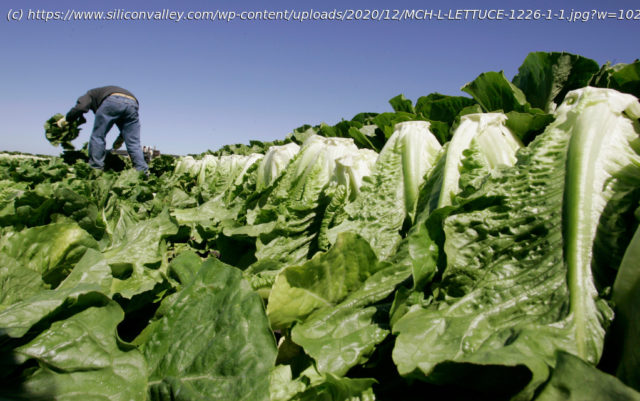The Salinas Valley has long billed itself as the Salad Bowl of the World. Last year alone, Monterey County grew $1.4 billion worth of lettuce. But for years the leafy green industry and Salinas Val…
The Salinas Valley has long billed itself as the Salad Bowl of the World. Last year alone, Monterey County grew $1.4 billion worth of lettuce. But for years the leafy green industry and Salinas Valley, which grows the majority of the nation’s lettuce, have also increasingly been known for something else: dangerous contamination in its leafy greens – particularly romaine lettuce – and an apparent inability to solve the problem. The recurring contamination has sparked distrust in international markets, leading to a bombshell announcement in October that Canada effectively banned the importation of Salinas Valley-grown romaine lettuce until Dec.31. The restrictions apply to romaine grown in four counties: Monterey, Santa Cruz, San Benito and Santa Clara. Although the U.S. Food and Drug Administration had announced a sweeping plan in March aimed at reducing outbreaks related to leafy greens, Canada wasn’t willing to take the risk, the country’s food inspection agency said. The move was a stark reminder to local growers who have been working vigorously for more than a decade to safeguard leafy greens from contamination — a journey that in many ways has been an exercise in frustration. “We absolutely recognize that there are millions of servings of these products consumed every single day. And the food is safe — except when it isn’t,” said Trevor Suslow, a food safety expert at UC Davis who recently stepped down as the vice president of produce safety at the Produce Marketing Association. Any level of illness caused by leafy greens, Suslow said, is not acceptable. Salinas Valley’s contamination problem drew international attention in 2006 when three people died and more than 200 people across the U.S. and in Canada were sickened from eating raw spinach contaminated with E. coli O157:H7, a virulent strain of bacteria that can cause severe stomach pain, bloody diarrhea and kidney failure. Even though the source of the outbreak was eventually traced to a remote valley in San Benito County, where a cattle ranch owner had leased land to a spinach grower, the eyes of the world were suddenly on the Salinas Valley. Federal investigators could not say definitively how the spinach became contaminated. But they did find the outbreak strain in nearby cattle and wild pigs, theorizing the pigs had traipsed through the spinach field or bacteria from the animals’ feces had made its way into wells used to irrigate spinach. And the outbreaks didn’t stop there. According to a recent study by several U.S. and Canadian government agencies, there were 32 E. coli O157:H7 outbreaks in the U.S. and Canada linked to leafy greens from 2009 to 2018. In the fall of 2019 alone, three major outbreaks of E. coli O157:H7 were traced back to romaine lettuce grown in the Salinas Valley. All told,188 people across the U.S. and Canada got sick from those outbreaks, leading to 92 hospitalizations and 16 cases of hemolytic uremic syndrome, a potentially fatal condition caused by bacterial toxins damaging blood vessels in the kidneys.
Домой
United States
USA — IT Salinas Valley: Growers contend with how to make sure leafy greens are...






